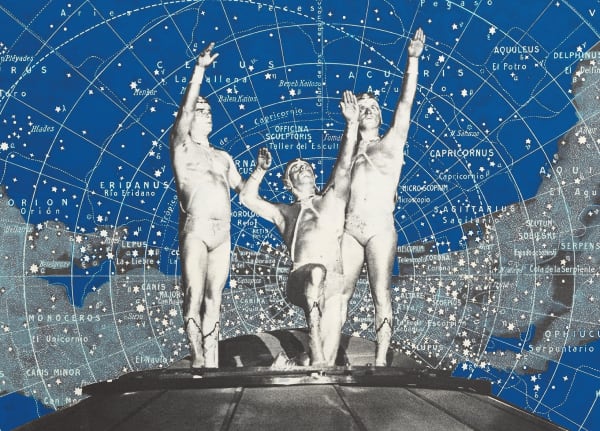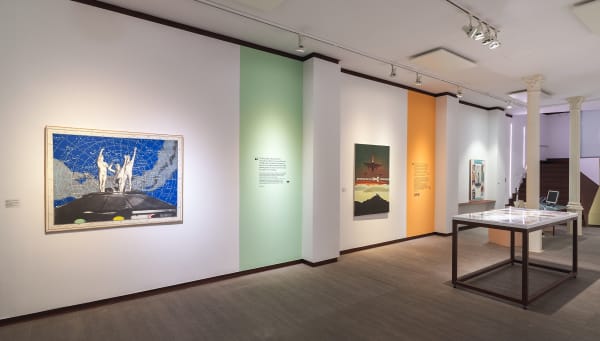Mayoral presents a solo exhibition by Eulàlia Grau, consisting of a selection of seven pieces from the series Etnografies (Ethnographies) in which the artist denounced the submission, injustice and repression to which society was subjected in the last years of the late Franco regime. The use of materials taken from the written press to provide a criticism of capitalism, mass consumerism, sexism and the dictatorship converted her into a leading artist, who triggered an alternative, rebellious and, above all, free look.
Eulàlia Grau (Terrassa, 1946) is an artist who unequivocally affirms: “I have always been convinced about what I was doing and I still am”. The criticism and authenticity that her work transmits responds to deep convictions and to the need to talk about a world in which people lived in the light of their own indignation. The exhibition includes the collaboration of Assumpta Bassas, who wrote the essay. Undertaking the exercise that her pieces demand, she shows us how Eulàlia talks about subjects — which are moreover currently very topical— with the critical, sardonic spirit full of nuances which characterizes her: the power relations of allied fascist and religious ideologies in La conquesta de l’espai (The conquest of space), the hypocrisy of western business with countries which violate human rights in works like Cafès Brasil (Brazil Coffees), the sexist and classist ideology in advertising and in the culture of sport in Caps, calces i mitjons (Heads, panties and socks) and Menú (Menu), the domestication of the masses and the annulment of critical thought in Multitud (Multitude), the virile culture of struggle which infiltrates our education from the youngest age, especially that of men in the piece Soldadets (Soldiers) and, finally, the constant threat of war and violence against human and planetary life in Avions de bombardeig (Bombers).
Eulàlia thus forces the spectator to look further. She used her archive of images cut from the media to create photomontages, compositions which she had enlarged and emulsified on canvas in Switzerland and which she then placed on frames, where she retouched the image with anilines, acrylics or using a more opaque type of paint, depending on whether she decided to obtain a certain transparency, to work on certain areas with spot colours, or to outline with gradients, emulating pictorial procedures from tradition. As Assumpta Bassas shows us, the result is compositions in which “The limits cut from the images, the narrative and disruptive ellipses of the scenes, often force us to rethink what we are looking at in order to relate and understand it. In many compositions we detect visual ideas characteristic of the world of information graphics, but also of comics and film”.








